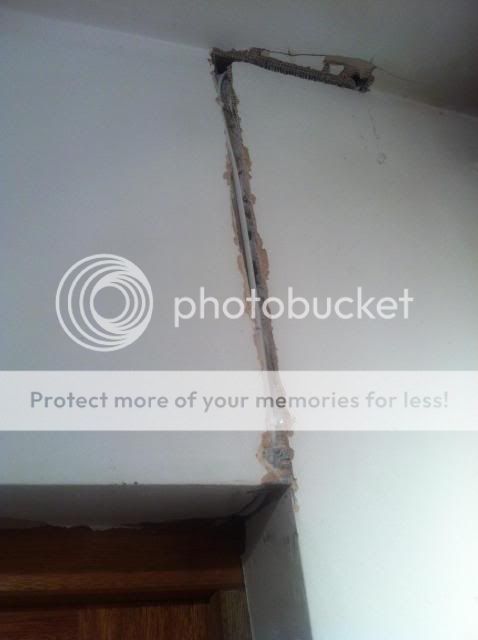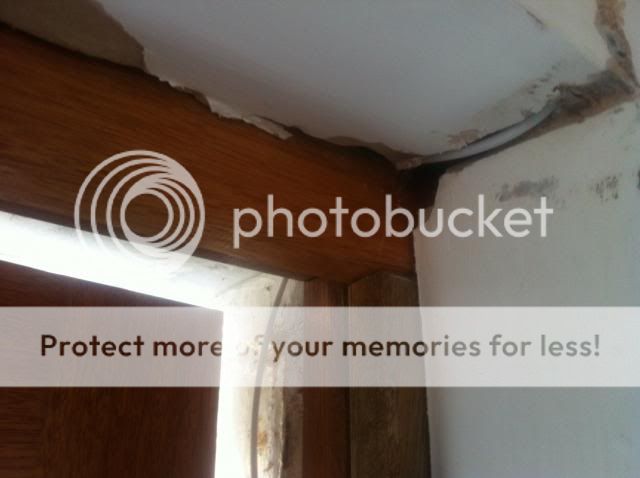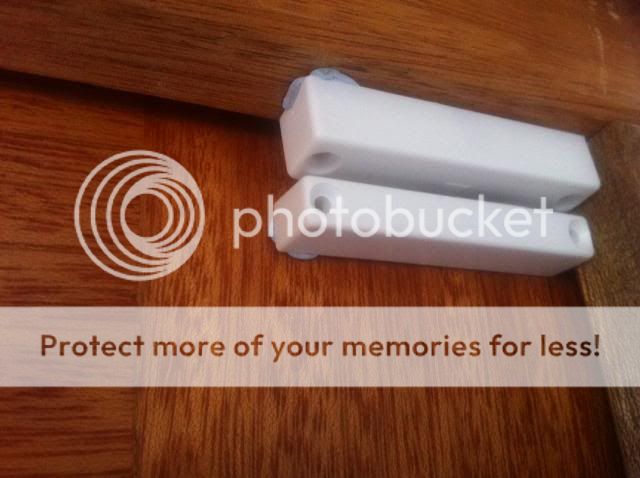You are using an out of date browser. It may not display this or other websites correctly.
You should upgrade or use an alternative browser.
You should upgrade or use an alternative browser.
Texecom Premier 24
- Thread starter Northbeach
- Start date
Sponsored Links
GHis back door is weatehr protected by the porch...open to the driving elements I could understand but the the body is such a good fit in the hole, it's unlikely to let damp in???
Maybe a little smear of vasseline might help to ensure no damp?
Just a thought
Maybe a little smear of vasseline might help to ensure no damp?
Just a thought
PC communication...
When i bought the GSM dialer, one of the benefits suggested (a bonus, niot the reason for buy ing it) was that it'd allow PC communication instead of having to buy a serial or usb connector.
Not sure if that's right??
Is there any way to connect a pc to the Tececom 24 with comm 2400 and GSM dialer other than serial cable (20quid) or usb cable (30 quid)?
When i bought the GSM dialer, one of the benefits suggested (a bonus, niot the reason for buy ing it) was that it'd allow PC communication instead of having to buy a serial or usb connector.
Not sure if that's right??
Is there any way to connect a pc to the Tececom 24 with comm 2400 and GSM dialer other than serial cable (20quid) or usb cable (30 quid)?
Maplins sell them for about £13 poundsserial cable (20quid)
If it is a simple serial cable then buy 9 way D connectors from Maplins and make your own. http://www.maplin.co.uk/d-sub-connectors-1113
Sponsored Links
Hi - apologies - been a busy weekend.
Ok - this is the original route for the cable to the back door contact. It's neither here nor there routing the cable either side of the door (door was put in last year and I still need to 'make good' around it anyway.


The door had to open outwards (unusual for a back door I guess) for a number of reasons, but it is indeed opening into a porch not open to the elements (although in mid winter it blinking feels that way!).
I'm not sure how close the contacts have to be aligned, or whether they need to be exactly straight with each other (I believe the gap can be as much as 20mm however?). Add a dash of OCD and I 'wrongly' believed it would be ok to place on the exterior (even though inside the porch...a porch with a plastic roof nonetheless!).
I've mocked this up (with blu tack) to demonstrate how it would sit in the interior (the frame not being flush with the door) - it could sit like this on the vertical, or horizontal on the top of the frame) - the corners of the contact and magnet are nestled against each other, but they're not directly aligned - problem? Otherwise, the flush one's are an option (if I can manage to fit the resistors in the DEOL method).

Many thanks.
Ok - this is the original route for the cable to the back door contact. It's neither here nor there routing the cable either side of the door (door was put in last year and I still need to 'make good' around it anyway.


The door had to open outwards (unusual for a back door I guess) for a number of reasons, but it is indeed opening into a porch not open to the elements (although in mid winter it blinking feels that way!).
I'm not sure how close the contacts have to be aligned, or whether they need to be exactly straight with each other (I believe the gap can be as much as 20mm however?). Add a dash of OCD and I 'wrongly' believed it would be ok to place on the exterior (even though inside the porch...a porch with a plastic roof nonetheless!).
I've mocked this up (with blu tack) to demonstrate how it would sit in the interior (the frame not being flush with the door) - it could sit like this on the vertical, or horizontal on the top of the frame) - the corners of the contact and magnet are nestled against each other, but they're not directly aligned - problem? Otherwise, the flush one's are an option (if I can manage to fit the resistors in the DEOL method).

Many thanks.
Maplins sell them for about £13 poundsserial cable (20quid)
If it is a simple serial cable then buy 9 way D connectors from Maplins and make your own. http://www.maplin.co.uk/d-sub-connectors-1113[/QUOTE]
£13 sounds good...although Maplin are usually far more expensive for many items. Not quite sure what exactly the cable is made up of, but I'll take a look this evening.
Many thanks.
The cable has a small circuit board in the middle of it which converts the TTL signal level of the panel to RS232 or USB signal levels, its nothing like a normal serial cable.
That white contact on a nice hardwood door looks horrible. I'd probably go with a brown flush mounted contact as its essentially an internal door.
That white contact on a nice hardwood door looks horrible. I'd probably go with a brown flush mounted contact as its essentially an internal door.
The cable has a small circuit board in the middle of it which converts the TTL signal level of the panel to RS232 or USB signal levels, its nothing like a normal serial cable.
That white contact on a nice hardwood door looks horrible. I'd probably go with a brown flush mounted contact as its essentially an internal door.
Cheers pacaouolte - I agree - I was going to purchase the brown block contacts (as the front door is the same) but I'll look into the flush versions - these:
http://www.alertelectrical.com/prod/1224/flush-mounting-burglar-alarm-contact-brown
And by the looks of them, they seem to be the same, wiring wise (5 screws in a circular format rather than straight)?
I'll have a look at the front door to see how I can neatly wire them, but as mentioned above, I can drill in at an angle near the top for the cable (might have to paint the cable however!).
I'm struggling to find those 'Premier Elite USB-Com - USB Interface Connectors' for less than £30 though...
Thanks.
The cable has a small circuit board in the middle of it which converts the TTL signal level of the panel to RS232 or USB signal levels, its nothing like a normal serial cable.
.
That's what i thought...is there any real world difference between the functionality of the serial and USB cables? one of my many old laptops will have a serial port...
Stoopid question, but when i power up the alarm properly for the first time, I presume the sounders will not just start going off if somethings not set right??
Or is it normal practive to unwire these, loop the tampers and only connect these once it looks right?
Is there an 'engineer mode' to be able to create alarms (for the dialers etc) but without having the bells go off, or do they just have to be unwired?
If the bell gets wired in, how does one unwire it without triggering the alarm? is there a software 'turn bell off' type setting?
Sorry for questions, but will be turning it on in the next couple of days and want to stay neigher friendly
Or is it normal practive to unwire these, loop the tampers and only connect these once it looks right?
Is there an 'engineer mode' to be able to create alarms (for the dialers etc) but without having the bells go off, or do they just have to be unwired?
If the bell gets wired in, how does one unwire it without triggering the alarm? is there a software 'turn bell off' type setting?
Sorry for questions, but will be turning it on in the next couple of days and want to stay neigher friendly
Yes, those flush contacts have the same 5 terminals in a circle. Even more fun getting the resistors in. You can get them with built in resistors but I don't know of a supplier for DIY.I'll look into the flush versions - these:
http://www.alertelectrical.com/prod/1224/flush-mounting-burglar-alarm-contact-brown
And by the looks of them, they seem to be the same, wiring wise (5 screws in a circular format rather than straight)?
I'll have a look at the front door to see how I can neatly wire them, but as mentioned above, I can drill in at an angle near the top for the cable (might have to paint the cable however!).
I'm struggling to find those 'Premier Elite USB-Com - USB Interface Connectors' for less than £30 though...
The USB-Com does retail around the £30 mark. The PC-Com (RS232 serial version) is cheaper at about £20.
They both do the same job....is there any real world difference between the functionality of the serial and USB cables? one of my many old laptops will have a serial port...
Resistors...doable though? I did solder one of my kids toy trains last week....tiniest bit of solderingon frankly rubbish electronics  . Point being, I'm fairly dextrous but do you reckon I'll end up flinging the flush contacts through the front door!!
. Point being, I'm fairly dextrous but do you reckon I'll end up flinging the flush contacts through the front door!!
Ah - PC - Com looks like a better choice (I shouldn't expect to be using that often anyhow).
PS - on the battery front - possible the 3ah is for the poly panel, whilst the 7ah are recommended for the larger metal panel? I'm dropping alert a line some time today, but if the 7ah battery isn't recommended for the poly panel (and I've reordered one) I'm in a right pickle again. Not clear in the manual:
I'll see what they say. Dimensions wise, the poly panel could 'just about' squeeze the 7ah battery in, but that's a rough guess. If there's experience of fitting the 7ah in the poly/plastic panel then I'll have a bit more 'arsenal' when speaking with alert.
Many thanks.
Ah - PC - Com looks like a better choice (I shouldn't expect to be using that often anyhow).
PS - on the battery front - possible the 3ah is for the poly panel, whilst the 7ah are recommended for the larger metal panel? I'm dropping alert a line some time today, but if the 7ah battery isn't recommended for the poly panel (and I've reordered one) I'm in a right pickle again. Not clear in the manual:
One or two 12V 7Ah batteries or one 12V 17Ah battery can be fitted inside the control panel (metal housing) to provide continued operation in the event of an AC mains failure.
I'll see what they say. Dimensions wise, the poly panel could 'just about' squeeze the 7ah battery in, but that's a rough guess. If there's experience of fitting the 7ah in the poly/plastic panel then I'll have a bit more 'arsenal' when speaking with alert.
Many thanks.
Yes it is likely to get noisy when you start it up, probably best to leave the external sounder disconnected and loop its tamper, this will let you play with the programming and test most of the system without aggravating the neighbours. Connect the external sounder once you are happy with everything else.Stoopid question, but when i power up the alarm properly for the first time, I presume the sounders will not just start going off if somethings not set right??
Or is it normal practive to unwire these, loop the tampers and only connect these once it looks right?
Is there an 'engineer mode' to be able to create alarms (for the dialers etc) but without having the bells go off, or do they just have to be unwired?
If the bell gets wired in, how does one unwire it without triggering the alarm? is there a software 'turn bell off' type setting?
Sorry for questions, but will be turning it on in the next couple of days and want to stay neigher friendly
The engineer code does allow you to test each part of the system independently.
to dial in over the gsm you will need a sim card with a data number.
DIYnot Local
Staff member
If you need to find a tradesperson to get your job done, please try our local search below, or if you are doing it yourself you can find suppliers local to you.
Select the supplier or trade you require, enter your location to begin your search.
Please select a service and enter a location to continue...
Are you a trade or supplier? You can create your listing free at DIYnot Local
Sponsored Links
Similar threads
- Replies
- 2
- Views
- 465
- Replies
- 3
- Views
- 623
- Replies
- 4
- Views
- 4K

